연락처
텍트로닉스 담당자와 실시간 상담 6:00am-4:30pm PST에 이용 가능
전화 문의 1-800-833-9200
9:00am-6:00PM KST에 이용 가능
다운로드
매뉴얼, 데이터 시트, 소프트웨어 등을 다운로드할 수 있습니다.
피드백
What is a Digital Multimeter?
A digital multimeter, or DMM, measures and verifies multiple electrical quantities, including voltage, current and resistance. It’s a daily diagnostic tool used by technicians and electrical engineers and combines the features of a voltmeter, ammeter and ohmmeter. A digital multimeter typically includes probes, clamps or leads, which are inserted into inputs on the instrument and then connected to the device under test to make a measurement.
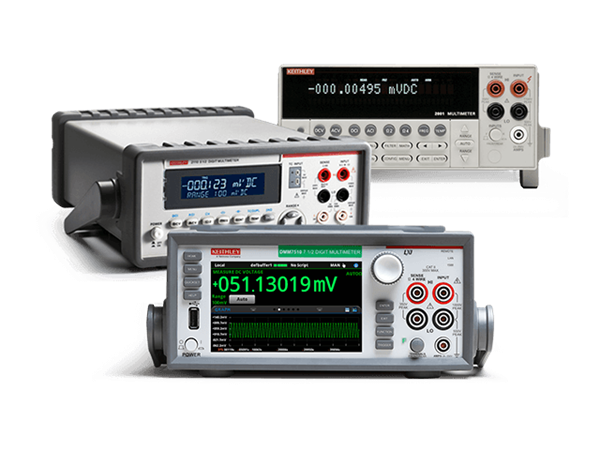
See Digital Multimeters from Keithley Instruments to Meet Any Measurement Requirement
Jump to a section
- What is a digital multimeter used for?
- Types of digital multimeters
- How to choose a digital multimeter
- How to use a digital multimeter
- Digital Multimeter vs. Oscilloscope
- Digital multimeter resources
- Frequently Asked Questions (FAQ)
What is a digital multimeter used for?
A DMM is primarily used to verify one of the three factors of Ohm’s Law voltage (volts), current (amps) and resistance (ohms). This simple equation, expressed below, is commonly used by electrical engineers during diagnostic testing.
V = I x R
V = voltage
I = current
R = resistance
Engineers in the lab and in the field also use digital multimeters to verify the state of a system or circuit for safety purposes. For instance, voltages in excess of 42V or currents in excess of 10 mA can provide painful shocks, and in some cases, be lethal. Resistances are also rated for certain powers (watts) and can get hot when driving higher currents and voltages. Digital multimeters essentially help engineers verify that a device under test is safe to work on.
Types of Digital Multimeters
General purpose digital multimeter
| General Purpose Multimeter | Used By | Used To | Form Factor | Overview |
|---|---|---|---|---|
 |
Beginners and Hobbyists | Troubleshooting simple circuits and get a general idea of what is and isn't working. | Handheld | They don't provide a high degree of accuracy but readings are fool proof. |
Often used by hobbyists, these DMMs measure voltage, resistance, continuity and current to troubleshoot simple circuits. They don’t provide a high degree of accuracy—just a general idea of what’s working. Simplicity is key and readings are fool proof.
| Handheld Digital Multimeter | Used By | Used To | Form Factor | Overview |
|---|---|---|---|---|
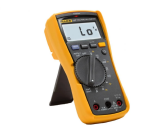 |
Electricians, electrical contractors and HVAC specialists | Make measurements and troubleshoot potentially hazardous system in the field. | Handheld | Handheld DMMs should be used when mobility is required. |
Also known as digital voltmeters, handheld digital multimeters are used by electricians, electrical contractors and HVAC specialists to make measurements and troubleshoot potentially hazardous systems in the field. Handheld DMMs should be used when mobility is required.
| Advanced Digital Multimeter | Used By | Used To | Form Factor | Overview |
|---|---|---|---|---|
 |
Electrical and electronic engineers | Perform more advanced measurements and gain confidence in their designs. | Bench Top | These DMMs are extremely precise and have a variety of advanced functionality |
Also known as bench DMMs or commercial DMMs, these instruments are used by electrical and electronic engineers to perform more advanced measurements and gain confidence in their designs. These instruments are extremely precise and have a variety of advanced functionality, including the ability to program automation, slow or speed up measurements to observe low-level or transient signal behavior, and interface with other instruments.
| Compact Digital Multimeter | Used By | Used To | Form Factor | Overview |
|---|---|---|---|---|
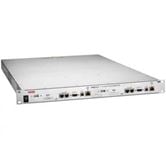 |
Electrical and electronic engineers | Perform more advanced measurements and gain confidence in their designs. | Rack Mounted | Used when precise measurements are needed, but space is limited. |
These multi-channel multimeters are used in manufacturing when precise measurements are needed, but equipment space is limited. They embed cards with switches and mux to "squeeze" tens or even hundreds of channels into a single mainframe.
How to Use a Digital Multimeter
Running lab tests using a digital multimeter is easy. Follow these six simple steps to set up your device and begin measuring your device under test (DUT):
- Check for physical damage on your digital multimeter and DUT.
- Connect the appropriate probes to the color-coded inputs of your digital multimeter.
- Configure your digital multimeter settings to the desired mode (resistance, voltage, or current).
- Verify the functionality of your digital multimeter by testing it with a known voltage source.
- Use the probes or clamps to measure by placing them on the positive and negative terminals of the DUT.
- Keep an eye on the digital multimeter's display screen for safety warnings while working.
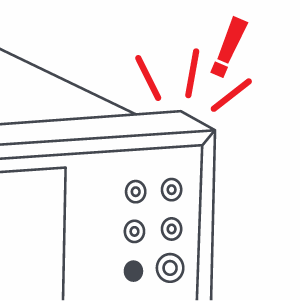
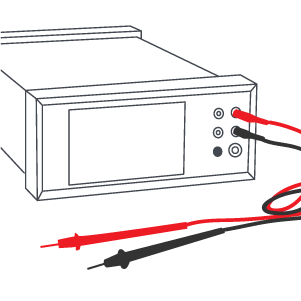
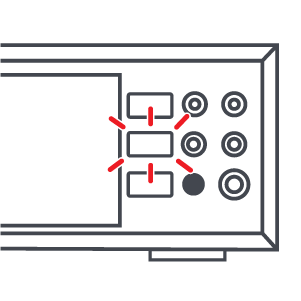
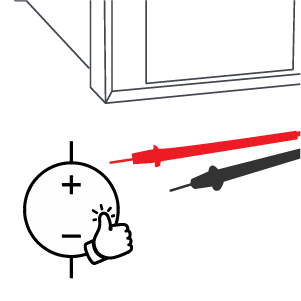
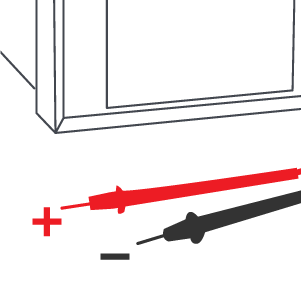
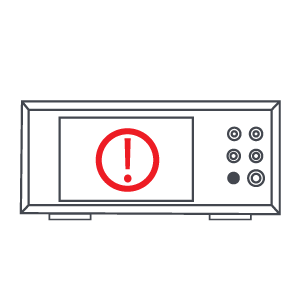
Note: The steps above cover the basics of how to use a digital multimeter, but engineers should always consult the model-specific instruction manual before operating a digital multimeter to ensure practices are safe and measurements are accurate.
Digital Multimeter vs. Oscilloscope
A digital multimeter allows you to read the voltage at any one moment in time, but oscilloscopes show how the voltage changes over time by graphically displaying a waveform. Oscilloscopes are often used over digital multimeters when troubleshooting more complex circuits.
| Digital Multimeter | Used to: | Circuit type: |
|---|---|---|
 |
Read the voltage at any one moment in time. | Simple Circuits |
| Oscilloscope | Used to: | Circuit type: |
|---|---|---|
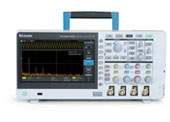 |
Measure how the voltage changes over time. | Complex Circuits |
How to Choose a Digital Multimeter
When it comes to choosing the right digital multimeter for your application, there are a number of considerations, starting with where you will be using it. You’ll also want to look at accuracy, speed and the number of channels needed to ensure the instrument will meet the demands of your job.

How to find the best digital multimeter for your needs
- Don’t break the bank: DMM6500, 2100 Series, 2110 Series
- The most precise reading: DMM7510, 2002 Performance DMM
- The need for speed: DMM6500, DAQ6510, DMM7510
- Give me more channels: DAQ6510, DAQ2750, 3700A
- I want it all: DMM7512
Digital Multimeter Resources
Ready to take your DMM knowledge to the next level? Learn more about digital multimeters and how to use them in the Tektronix Learning Center, where you can find these and many other resources:
- Digital multimeter selector guide
- Temple University IDEAS Hub Education Case Study
- Top Five Digital Multimeter User Questions (and Our Answers)
- Getting Back to the Basics of Electrical Measurements
If you’re thinking of purchasing an advanced digital multimeter, view our DMM comparison table, browse our collection of digital multimeters or request a product demo.
Frequently Asked Questions (FAQ)
How does a digital multimeter work?
A digital multimeter uses a combination of analog and digital circuitry to measure electrical quantities. The analog circuitry converts the input signal to a voltage that is proportional to the quantity being measured. The digital circuitry then converts this voltage to a digital display.
What are the different types of digital multimeters?
General Purpose Digital Multimeter
- Used by beginners and hobbyists
-
Used to troubleshoot simple circuits and get a general idea of what is and isn't working
-
Handheld
-
Don't provide a high degree of accuracy
- Readings are fool proof
Handheld Digital Multimeter
- Used by electricians, electrical contractors and HVAC specialists
-
Used to make measurements and troubleshoot potentially hazardous systems in the field
-
Handheld
- Should be used when mobility is required
Bench Digital Multimeter
- Also known as bench DMMs or commercial DMMs
-
Used by electrical, electronic engineers and scientists
-
Used to perform more advanced measurements and gain confidence in their designs
-
Used to troubleshoot electronics and perform failure analytics
-
Extremely precise, may be used to calibrate other measurement devices
-
An essential tool for electrical research at the university level
-
Have a variety of advanced functionality
- Includes the ability to program automation, slow or speed up measurements to observe low-level or transient signal behavior, and interface with other instruments
Compact Digital Multimeter
- Also known as rack-mounted multimeters
-
Used in manufacturing when precise measurements are needed, but equipment space is limited
- Embed cards with switches and mux to "squeeze" tens or even hundreds of channels into a single mainframe
Here is a table that summarizes the key differences between the different types of digital multimeters:
|
Feature |
General Purpose Digital Multimeter |
Handheld Digital Multimeter |
Bench Digital Multimeter |
Compact Digital Multimeter |
|
Used by |
Beginners and hobbyists |
Electricians, electrical contractors and HVAC specialists |
Electrical and electronic engineers |
Manufacturing |
|
Used to |
Troubleshoot simple circuits and get a general idea of what is and isn't working |
Make measurements and troubleshoot potentially hazardous systems in the field |
Perform more advanced measurements and gain confidence in their designs |
Make precise measurements in limited space |
|
Form factor |
Handheld |
Handheld |
Bench top |
Rack-mounted |
|
Accuracy |
Low |
Medium |
High |
High |
|
Functionality |
Basic |
Basic with some advanced features |
Advanced |
Advanced with multiple channels |
What are the safety precautions when using a digital multimeter?
When using a digital multimeter, it is important to follow the following safety precautions:
- Always disconnect the power source before connecting the multimeter.
-
Never Disable safety mechanisms
-
Never touch the probes with your bare hands.
-
Choose the correct probes based on application
-
Use the correct range for the measurement you are taking.
-
Do not overload the multimeter.
- Store the multimeter in a safe place.
How to test for continuity with a digital multimeter?
To test for continuity with a digital multimeter, you will need to:
-
Set the multimeter to the resistance range.
-
Touch the probes together.
-
If the multimeter displays a reading of 0 ohms, the circuit is continuous.
-
If the multimeter displays an infinite reading, the circuit is not continuous.
What is the difference between a multimeter and a digital multimeter?
A multimeter is a general-purpose measuring instrument that can measure voltage, current, and resistance. A digital multimeter (DMM) is a type of multimeter that uses digital circuitry to display the measurement results.
The main difference between a multimeter and a DMM is the way the measurement results are displayed. A multimeter uses an analog display, which means that the measurement results are shown as a needle that moves across a scale. A DMM uses a digital display, which means that the measurement results are shown as a number on a screen. DMMs are generally more accurate and easier to read than multimeters. However, they are also more expensive.
Here is a table that summarizes the key differences between multimeters and DMMs:
|
Feature |
Multimeter |
Digital Multimeter |
|
Display |
Analog |
Digital |
|
Accuracy |
Lower |
Higher |
|
Ease of use |
More difficult |
Easier |
|
Price |
Lower |
Higher |

